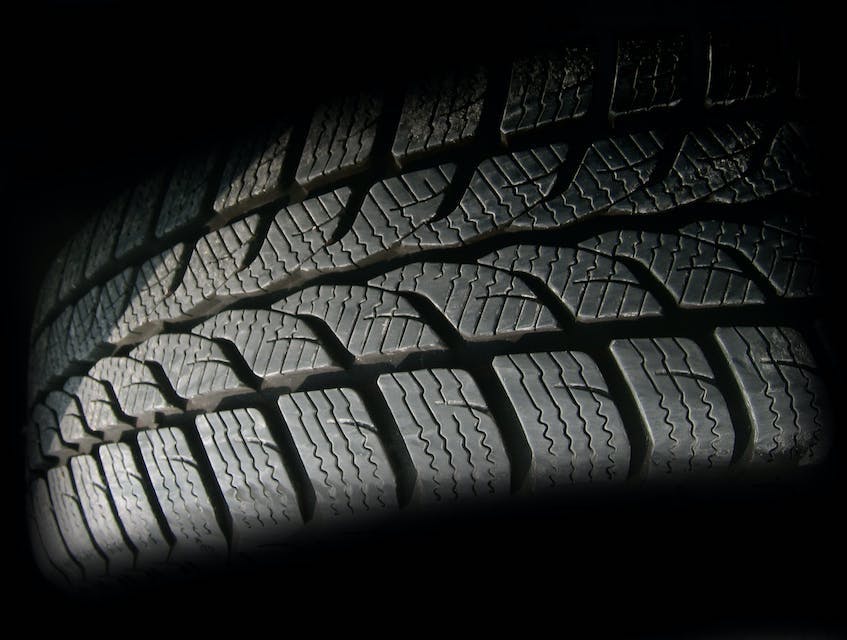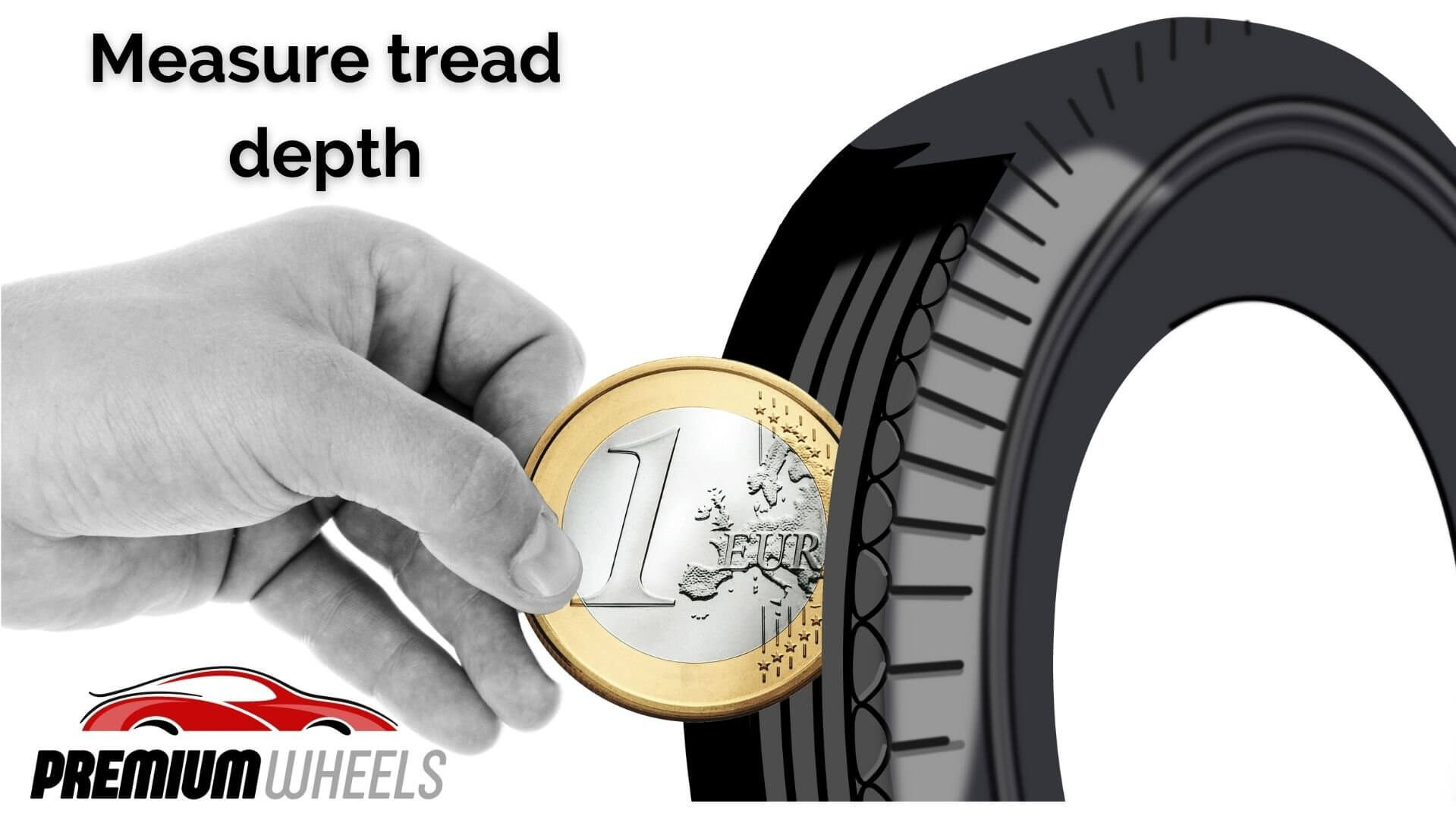20/08/2021

Tire tread
Minimum Tread Depth Tires: Important in every Season
Driving safety depends on two basic factors: the right tire pressure and sufficient minimum tread depth are the duo for safe driving pleasure. However, you should not leave tire tread depth to chance: a deficient tire tread significantly lengthens the braking distance. That is why the legal minimum tread depth is enforced with fines and points.The most important information about the minimum tread depth
Check minimum tread depth
✔ Legal minimum tread depth: a tire tread of 1.6 mm is the absolute minimum
✔ Measuring tire tread: the lower gold edge of a 1 euro coin is a good indicator
Minimum Tread Depth Car - Legal Regulations
The minimum tread depth of the wide tread grooves is 1.6 mm. The so-called tread grooves are found in the central area of the tire tread. By comparison, the tread depth of new passenger car tires is between 7 and 9 mm. Vehicle owners and drivers are obliged to test the minimum tread depth car regularly.Minimum Tread Depth Winter Tires and All-Season Tires
The winter tire tread depth for new tires is between 8 and 9 mm. The recommended minimum winter tire tread depth is 4 mm. This is more than twice the legal minimum tread depth. Already at a winter tire tread depth of 3.9 mm, the performance deteriorates. This means that the braking distance is longer and behavior in corners suffers.
The winter tire tread is important: you can only use the snow-on-snow friction for more grip with sufficient winter tire tread depth. The deep tread pattern of the tread grooves collects (melting) water while driving and prevents aquaplaning.
This means: without sufficient summer tire tread, there is a risk of aquaplaning.

Important: the measurement of the minimum tread depth is also measured at the most worn spots. If the tread depth at the weakest point falls below the legal requirement - then a fine is due.
The winter tire tread depth for new tires is between 8 and 9 mm. The recommended minimum winter tire tread depth is 4 mm. This is more than twice the legal minimum tread depth. Already at a winter tire tread depth of 3.9 mm, the performance deteriorates. This means that the braking distance is longer and behavior in corners suffers.
- +10% braking distance: minimum tread depth of winter tires less than 2 mm (vs. 4 mm)
- +25% braking distance: minimum tread depth winter tires less than 2 mm (vs. 8 mm)
How can I recognize winter rims and what do I have to consider when changing tires? You can find this and other useful information in our article on winter rims and tires and the article on changing tires.
Minimum Tread Depth for Summer Tires
The recommended summer tire tread depth also differs from the legal minimum tread depth. The tread depth summer tires new counts between 7 and 8 mm. Experts advise 3 mm minimum tread depth summer tires. With a low summer tire tread depth suffer (as with winter tire tread depth) cornering performance and braking distance. In addition, the drainage effect disappears at low summer tire tread depth.- 30% drainage effect: 3 mm tread depth summer tires (vs. 8 mm)
- 10% drainage effect: 1.6 mm tread depth summer tires (vs. 8 mm)
Important: Changing Tires
Changing from summer to winter tires is important. The reason: both summer and winter tires are optimally adapted to the conditions of the respective season. With sufficient winter tire tread depth, the winter tire offers plenty of grip in snow and slush. The wide contact surface is a hindrance in summer. Summer tires with good summer tire tread depth guarantee a zippier driving experience with less wear. Find out here the details about changing tires and why it is necessary. Important: Winter tires increase the braking distance in summer. It is better not to drive off the remaining winter tire tread depth in the summer.Our tip: regularly measure tire tread depth. You can get a quick impression by measuring the tire profile with a 1 Euro coin.

Measure Tire Tread Depth with a 1 Euro Coin
Tire tread depth can be determined in different ways. If you want to measure the tire tread, you need to find the tread grooves next to the small ridges. The ridges (yellow on the picture) are called wear indicators or Tread Wear Indicator (TWI). A ruler or a commercially available tread depth gauge can serve as a measuring instrument for the tread depth. But you can also measure tire tread depth without these tools: You only need 1 euro to measure tire tread depth. The coin serves as an indicator, as the gold rim is exactly 3 mm wide. If you measure the tire tread with 1 euro, the result is to be understood as an inaccurate diagnosis. The rule of thumb: if the lower gold rim disappears in the tire profile, the tire has sufficient minimum tread depth.
Avoid Tread Depth Wear
You can avoid the wear of tire tread depth. Uneven load on tires promotes rapid shrinkage of the minimum tread depth.
The most common causes of irregular wear:
- Too low tire pressure
- Dynamic or static imbalance
- Faulty braking system
- Incorrect adjustment of axles
- Too much clearance for wheel bearings
- Defective or worn shock absorbers























